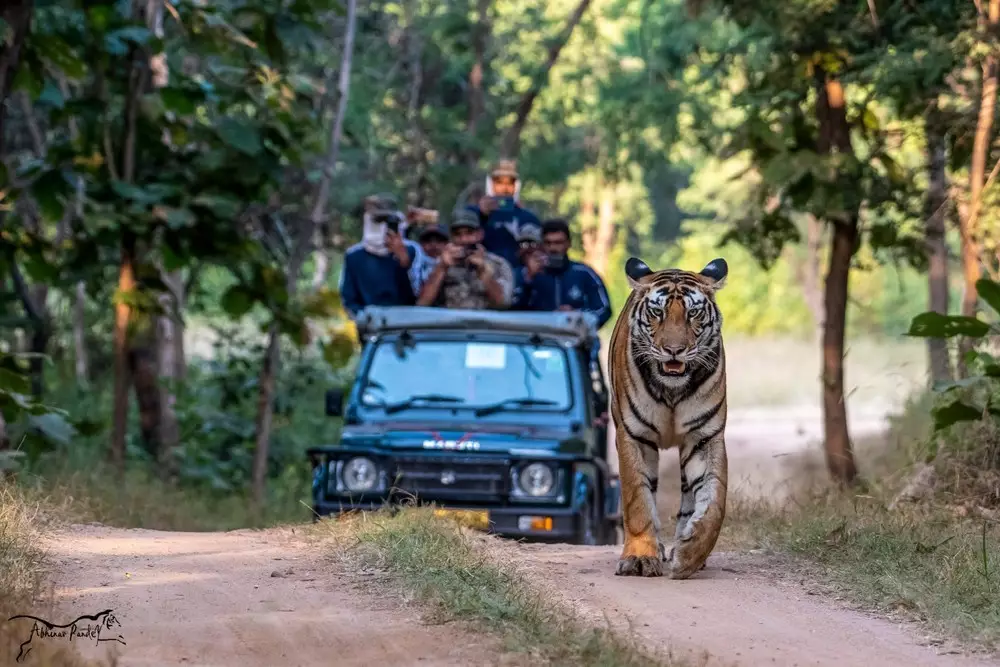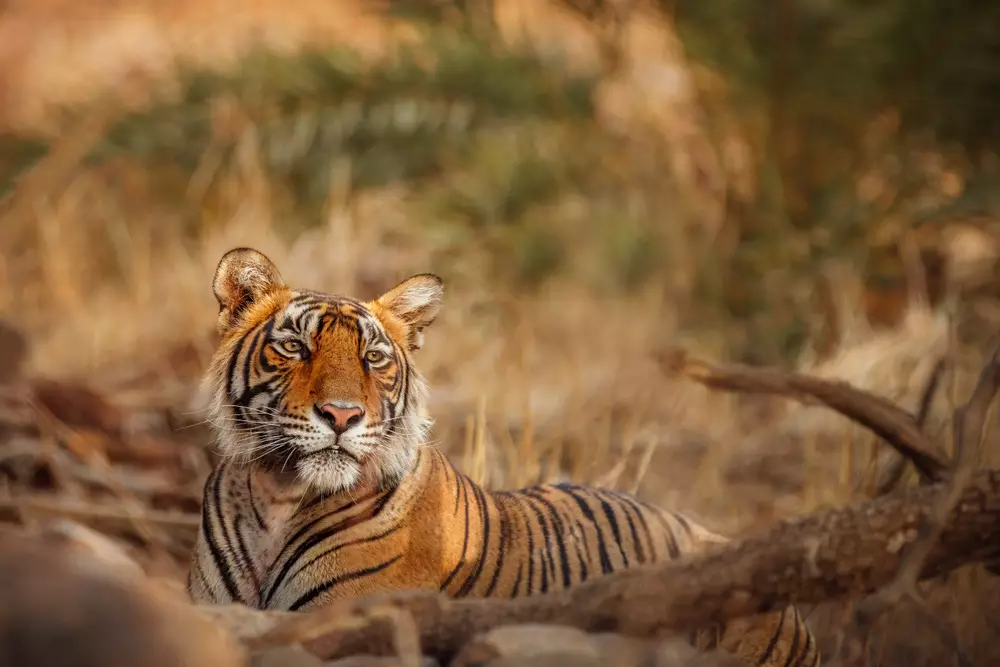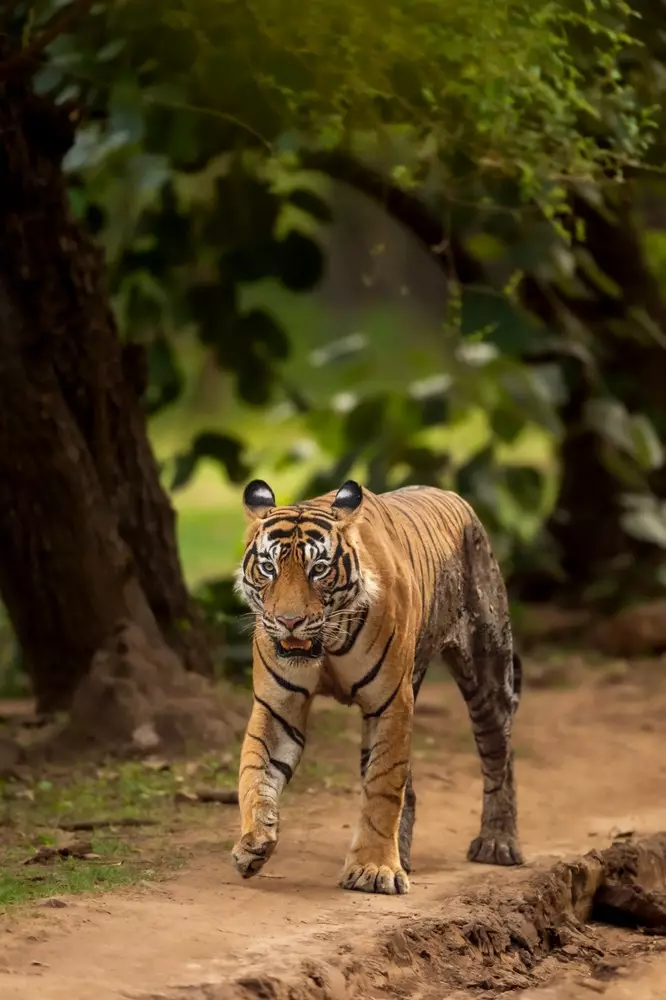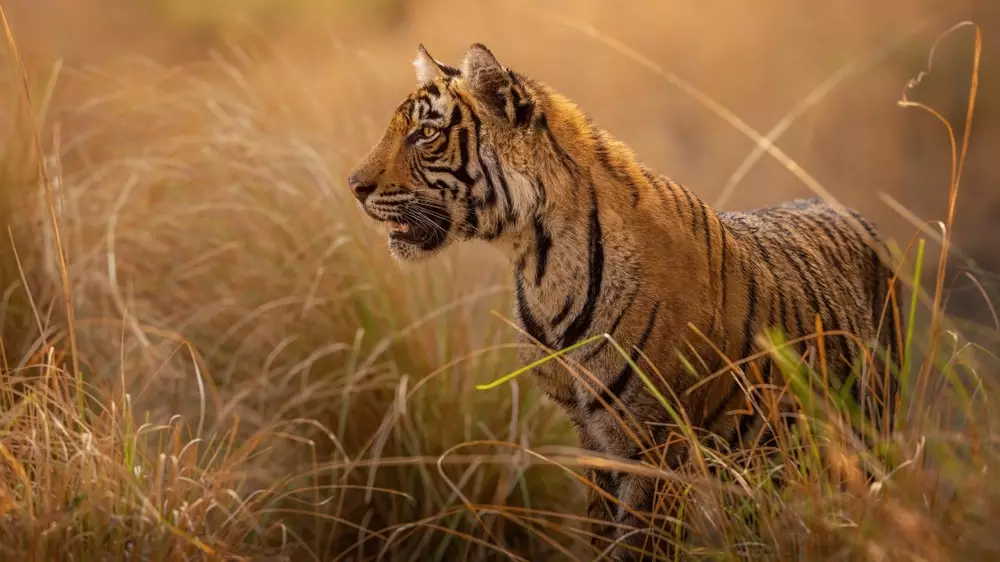Tigers are the largest members of the cat family, a species renowned for their power and strength and a must-see on any holiday to India. Bengal tigers, the most common of the six sub-species, accounting for around half of all wild tigers, are found across India, Nepal, Bhutan and Bangladesh.
Tigers are deeply symbolic in Indian folklore and spirituality, representing courage, fierceness and regal stature, appearing as the steed of the Goddess Durga in Hindu mythology, and appear frequently in art and literature.
Fully Inclusive of Tour & Flights
Fully Inclusive of Tour & Flights
Fully inclusive of Tour & Flights

The 58 tigers reserves that were established by Project Tiger are the very best places to see tigers, some of them particularly renowned for their high tiger population.
Often within national parks, searching for tigers is done as a safari, heading out into the wilderness in the morning and early evening with an experienced guide who will help you spot these majestic creatures, alongside a whole host of other wildlife.
Ranthambore National Park is perhaps the best-known place to tiger spot, located on the edge of India’s popular Golden Triangle itinerary, providing shelter for about 88 tigers (2023), while Bandhavgarh (known as the ‘Land of the Tiger’), Kanha and Tadoba are also well known for their good chance of an encounter.





